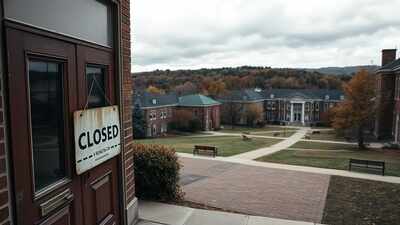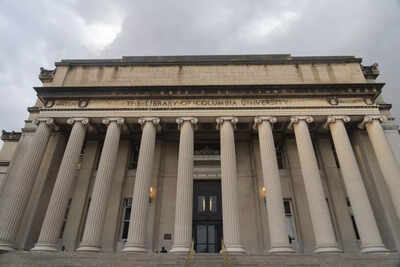Pennsylvania universities are resorting to layoffs: Here is why

Universities across Pennsylvania are increasingly resorting to layoffs, campus closures, and mergers: a direct result of declining enrollment, stagnant public funding, and rising operational costs.According to a report by the National Center for Education Statistics, enrollment at US institutions of higher education dropped by 15% between 2010 and 2021, placing long-term pressure on college finances. This trend has been compounded by cuts in federal funding for higher education and research, as well as staffing reductions at the US Department of Education, which have created delays and uncertainty in financial aid processing.
Temple University announces job cuts amid budget pressures
In July 2025, Temple University confirmed the elimination of 190 positions, including approximately 50 layoffs, as part of a cost-cutting plan to reduce a $60 million deficit to $27 million. According to Temple’s June 2025 budget update, the university has lost around 10,000 students since 2017, resulting in a revenue decline of about $200 million. The university also cited the upcoming changes to federal student loan and Pell Grant programs set to take effect in the 2026–27 academic year as an additional financial burden.
Penn State to close seven regional campuses
In May, the Board of Trustees at Pennsylvania State University approved the closure of seven campuses: DuBois, Fayette, Mont Alto, New Kensington, Shenango, Wilkes-Barre, and York. These campuses, facing enrollment declines of up to 30%, will shut down after the 2026–27 academic year, leaving 13 campuses operational. The university has also implemented staff and operational cost reductions.
Closures and mergers escalate
According to Higher Ed Dive, which tracks college closures and consolidations, ten Pennsylvania colleges have either merged or closed since 2016. In 2024 alone:
- The University of the Arts in Philadelphia closed abruptly due to declining enrollment and financial instability.
- Pittsburgh Technical College shut down in August 2024.
- Clarks Summit University, located in Lackawanna County, ceased operations in July 2024.
Mergers have become a popular alternative to full closure. In recent months:
- Rosemont College announced a merger with Villanova University.
- Lackawanna College merged with Pierce College in Philadelphia.
- Drexel University completed a federally approved merger with Salus University in July 2025, aimed at consolidating healthcare education and research infrastructure.
Private colleges use shared services to cut costs
The Association of Independent Colleges & Universities of Pennsylvania (AICUP) — representing over 80 institutions — has implemented 39 cost-saving programs that collectively generate tens of millions of dollars in annual savings. This includes joint purchasing of software, insurance, energy, and retirement fund management, helping small private institutions remain competitive despite limited direct government funding.
HBCUs and state-related institutions face added uncertainty
Lincoln University, a historically Black university (HBCU) and state-related institution, continues to operate without layoffs but is navigating severe budget constraints. Around 98% of Lincoln’s students depend on federal financial aid, and delays caused by staff reductions in regional financial aid offices have added pressure. Lincoln receives approximately 25% of its budget from the state, which remains unresolved due to delays in the state budget process as of mid-2025.
Impact beyond the campus
The Federal Reserve Bank of Philadelphia, in a 2024 report, noted that college closures, mergers, and financial distress can have serious ripple effects on local economies, particularly in communities where universities act as major employers and economic drivers. In Philadelphia alone, institutions such as Drexel, Temple, Penn, and Jefferson play critical roles in both education and healthcare delivery.According to the same report, higher education and hospital “anchor institutions” contribute $1.7 trillion to the US economy and support 18 million jobs — or 9% of the national workforce. The higher education sector alone contributes $700 billion annually, with a total student enrollment of 25 million and employment for 3 million people.
State response and outlook for 2025–26
In response to the ongoing crisis, Governor Josh Shapiro’s proposed 2025–26 state budget includes:
- $13 million for community colleges,
- $40 million for state-owned universities, and
- $60 million in performance-based funding for state-related universities like Penn State, Lincoln, Temple, and the University of Pittsburgh.
Still, many experts warn that these increases may not be sufficient to reverse the financial distress already in motion. According to a 2025 report by Fitch Ratings, higher education institutions are expected to continue facing mergers, closures, and restructurings, with revenue growth unlikely to match the pace of rising labor costs and capital demands.TOI Education is on WhatsApp now. Follow us here.




